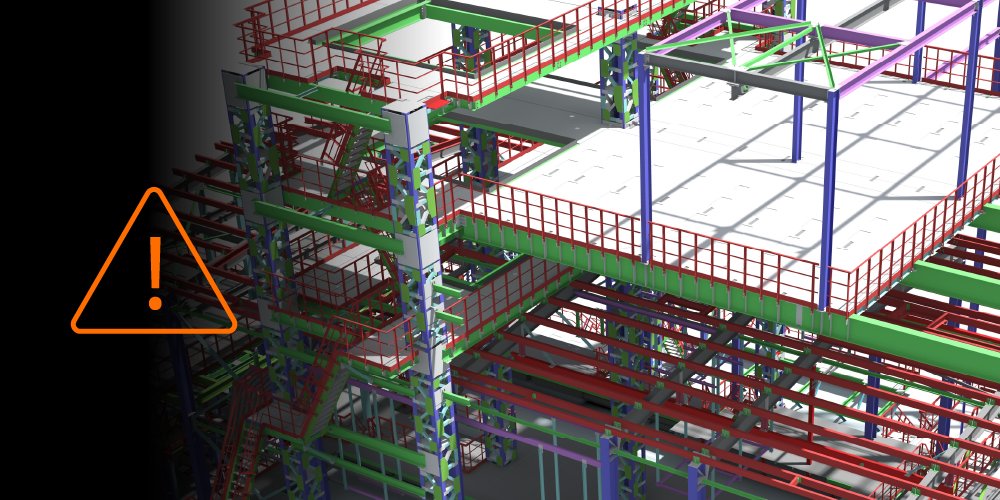Related Articles
— 11 min read
How Cost-Plus Contracts Work in Construction
Last Updated Aug 28, 2025
Emma De Francesco
Strategic Product Consultant
21 articles
Emma is currently Strategic Product Consultant at Procore where she loves partnering with clients to help them achieve the best possible results. She has worked as a Project Manager in previous roles, responsible for overseeing small to medium-sized projects across various sectors including commercial, health and lifestyle, retail, government and hotels. Throughout these projects, she managed everything from project costs, program and quality & safety, to design management, procurement, and authority approvals.
Last Updated Aug 28, 2025

A cost-plus contract provides reimbursement for all of the costs associated with a construction project, plus a fee to account for the contractor’s overhead and profit. Construction project owners may employ this type of contract when they want to get a project moving quickly or when the scope of work is unclear, making it difficult to estimate the total cost. That said, the total price for a cost-plus contract may ultimately be higher than it would be with other contract types. Below, we’ll provide an in-depth look at how cost-plus contracts work, a cost-plus contract example, and the pros and cons of this contract type.
Table of contents
How cost-plus contracts work
A cost-plus contract is a construction agreement that requires reimbursement for project costs as well as a markup that covers the contractor’s overhead and profit. In other words, the name is a short-hand way of remembering what the contract covers: project costs plus contractor markup.
| Items Covered | |
|---|---|
| Project Costs | Direct costs associated with the construction project, including labor, materials, subcontractor profit, expenses, allowances, and change orders |
| Contractor Markup | Often charged as a percentage of the total project cost or a fixed fee that accounts for the general contractor’s overhead and profit |
This contract type is most common between a project owner and general contractor, though it may also be used with general contractors and subcontractors.
The contract signed by the project owner and general contractor will specify exactly what costs are considered project costs. Also called direct costs, project costs typically include all costs directly associated with construction activities — with the bulk of the costs coming from labor, materials, and markup from subcontractors.
The contract will also lay out how the contractor’s markup is calculated. There are a few common arrangements for handling the contractor’s fee:
- Percentage of cost: The contractor receives a markup equal to a certain percentage of the total project cost. This percentage fee can vary across projects and industries, but it’s typically set between 5 and 25 percent.
- Fixed fee: The contractor receives a flat fee that’s determined during contract formation.
- Incentive fee: The contractor receives incentives on top of the predetermined fee if they meet contract targets, like cost savings or a faster timeline.
- Award fee: The contractor receives an award on top of the predetermined fee if they exceed performance expectations laid out in the original contract and construction documents.
Notably, cost-plus contracts are often easier to negotiate because of the reduced risk for contractors. Unlike lump sum contracts, in which contractors could face reduced profits when project costs exceed expectations, cost-plus contracts guarantee that the contractor will have costs reimbursed and still receive their fee.
That said, a cost-plus contract is not a blank check from a project owner to a general contractor. Generally, the contract will include a clause that requires the contractor to provide the owner a good faith estimate for the total cost of a project. Additionally, the contractor will provide a schedule of values that indicates the estimated cost of each aspect of the project — and this schedule will later be used as subcontractors submit applications for progress payments according to the percentage of completion.
It’s in the best interest of the general contractor to clearly communicate a reasonable estimate for the project. If the GC comes in near (or under) the estimated budget, the project owner will be more likely to trust the contractor and work with them again in the future. Also, a general contractor that does not provide a realistic estimate may struggle later with denied change orders — leading to project costs that are not reimbursable, cutting into the GC’s fee.
Therefore, even though a cost-plus contract provides a favorable financial situation for the GC, they tend to benefit more over time by providing great value to the project owner. Lastly, it’s important to note that cost-plus contracts do not cover costs associated with a contractor’s mistakes or negligence — though they may cover situations related to estimating errors.
Advantages of cost-plus contracts
Cost-plus contracts have some benefits for both project owners and contractors. Advantages of cost-plus contracts:
| For Owners | For Contractors |
|---|---|
| Easier negotiations: Projects can typically get started faster since the contractor knows costs are covered. | Lower risk: Since costs will be covered and the fee is predetermined, contractors have less risk. |
| Hybrid contracts are possible: By using a guaranteed maximum price clause, owners can avoid going over budget. | May include incentives: Some contract types include performance incentives to encourage better work or lower costs. |
| Able to start projects without a clear scope: Because contractors know they will be paid regardless of the eventual scope, they are willing to start a project with cost-plus. | Guaranteed profit: With a fee built in, contracts are guaranteed that the project will be profitable. |
| Increased transparency: Owners can see the true costs of the project as it unfolds. | Improved cash flow: Because of the way that costs are reimbursed, cash flow burden is often less with this type of contract. |
| Potentially higher quality: Contractors have little incentive to cut corners, so the project may ultimately be of higher quality. | Builds trust: Because of the transparency and relationship required to execute a cost-plus contract, contractors can build trust that leads to future opportunities for partnership. |
Generally speaking, project owners who are more concerned about timeline and quick negotiations (rather than budget) benefit from using cost-plus contracts, as these tend to be easier to arrange with general contractors.
General contractors prefer the reduced risk associated with cost-plus contracts, as these arrangements provide a near guarantee that the contractor will be profitable on the project while having all direct costs reimbursed.
Disadvantages of cost-plus contracts
Nonetheless, cost-plus contracts present some disadvantages for the parties involved — though these can usually be mitigated with careful contract formation and relationship building. Disadvantages of cost-plus contracts:
| For Owners | For Contractors |
|---|---|
| Unknown final cost: With a standard cost-plus agreement, the final cost is estimated but not known. | Needs careful review of reimbursable items: Not all costs are considered reimbursable, so contractors must review the contract carefully to ensure costs don’t cut into their fee. |
| Requires a trusted partner: Without a trusted partner, owners may worry that the GC is trying to run up the project cost. | Requires sophisticated cost tracking: The GC must provide sufficient documentation for costs and completed items. |
| Potential for disputes: Because the owner is ultimately responsible for every cost, they may need to audit charges to ensure they are reimbursable according to the contract. | Change orders can lead to disputes: Because most costs are covered, change orders that deviate from the original scope could be disputed. |
First of all, a basic cost-plus contract leaves the owner unsure of the final construction cost, which could lead to an over-budget project. Additionally, cost-plus contracts often work best when both parties have already built trust over time, so owners who use this contract type with unknown entities could end up with disputes over scope or cost throughout the project.
Also, general contractors must provide sufficient documentation of costs and percentage of completion throughout the project in order to get reimbursed. This requires a more sophisticated cost management system than many construction companies use with other types of construction agreements. Additionally, change orders on cost-plus projects can potentially lead to disputes if the project owner is already feeling squeezed by rising costs.
One way to avoid these disadvantages is to include a guaranteed maximum price (GMP) with the original contract. While GMP contracts exist on their own, it’s also possible for a cost-plus arrangement to include a guaranteed maximum price — also called a cost cap provision or not to exceed clause — which protects owners by limiting the total amount the owner is responsible for paying.
This clause can incentivise contractors to keep total project costs down while ensuring the owner stays under a predetermined ceiling for their budget.
Additionally, trust is key with a cost-plus contract. When a long-term partnership emerges between a project owner and a general contractor, both parties are incentivised to keep good faith so that the partnership continues in the future. The short-term gains of taking advantage of the owner on one project are outweighed by the long-term gains of future projects and collaborations.
Cost-plus contract example
Let’s take a closer look at an example of a cost-plus contract for a hypothetical construction project.
A property development company approaches Greene Construction, a general contractor they’ve previously worked with, to help convert a decommissioned airplane hangar into an upscale retail space. This type of negotiated tendering is common, and the trust these two businesses have already established makes a cost-plus arrangement less risky for the project owner.
The two parties sign a cost-plus contract, and Greene Construction provides a good-faith estimate for the total project cost as well as a schedule of values. Before signing the contract, Greene Construction had already contacted preferred specialty contractors, so they had a good idea of what each aspect of the project would cost. Price quotes from each of those subcontractors informed each item in the schedule of values since Greene Construction is a general contracting firm that does not self-perform any work.
The cost-plus arrangement that Greene Construction signed stipulated that they would receive reimbursement for all project costs as well as a fee of 10 percent of the total project costs to cover their indirect costs, overhead, and profit.
As the project goes on, specialty contractors submit pay applications to Greene Construction, who request draws from the project owner by providing supporting documentation to demonstrate a certain percentage of work completed according to the schedule of values. In some cases, costs — like labor or materials — may have shifted from the original estimate, and these costs are generally covered by the project owner as long as they are covered by the contract and construction documents.
Occasionally throughout the project, the general contractor may need to have a change order approved to amend the original contract — otherwise, the cost won’t be reimbursable. As long as both Greene Construction and the development company agree on the change, the contract is amended and construction continues. Occasionally, two parties may need to use the dispute resolution process spelled out in the contract, which typically involves binding arbitration.
Once the project reaches substantial completion, the project owner prepares to make final payments to Greene Construction to cover their costs and fee. The original cost-plus contract stipulated that all remaining project costs and contractor fees would be paid out within 30 days of both parties signing the Certificate of Substantial Completion. At this point, Greene Builders prepares to address items in the defect list and pay any retainage to its subcontractors.
By using a cost-plus agreement, Greene Construction has managed to secure a significant fee with relatively low risk, and the property development company was able to complete construction within a favorable timeline by lowering the burden of negotiations on the front end.
Other contract types compared
Cost-plus contracts are useful in a variety of situations, but they aren’t the only type of construction contract that owners and contractors can use for a project. Depending on the project’s details and the owner’s approach, different types of contracts may be the best fit.
For example:
- Lump sum contracts lay out a fixed fee for services at the onset of the project, which provides a more predictable budget for project owners than a cost-plus contract does.
- Guaranteed maximum price (GMP) contracts set an upper limit on costs for the project owner, above which the construction manager at risk (CMAR) absorbs any additional costs, which makes GMP contracts less risky for project owners than cost-plus contracts.
- Time and materials (T&M) contracts establish a fee for labor and material costs (which include the contractor’s overhead and profit), which makes it similar to cost-plus contracts, though contractors must be careful to calculate their fees correctly in order to stay profitable.
- Unit price contracts bill for repeatable units of work — like framing a patterned residential home — and only resemble cost-plus contracts in the sense that both allow for project costs to trend upward if the scope of work increases during the project.
Finding the right contract for a project helps contractors and project owners balance financial risk with the potential upside of larger profit margins. There is no single best contract type, and many construction projects involve hybrid contracts or different contract types for different aspects of the project.
Importance of contract formation
Contract formation is a time for both project owners and contractors to mitigate their financial risk on a project. Carefully reviewing clauses related to reimbursable and non-reimbursable items, change orders, dispute resolution, payment applications, and more can ensure that conflicts are avoided — which will ultimately make a project smoother and more profitable for all parties involved.
Using the right contract type is an important financial management strategy for owners and contractors.
Owners need their projects to provide a sufficient rate of return to pay back their lenders and turn a profit, so carefully selecting a contract type that keeps costs within budget is paramount.
Contractors, meanwhile, often take on a lot of financial risk early in a project due to mobilisation costs and retainage — both of which increase start-up costs and delay profits. By using a well-defined contract, general contractors and specialty contractors can work to ensure their projects are profitable despite the risks associated with complexity and uncertainty.
See what’s coming in construction over the next decade.
Download the Future State of Construction Report for insights, trends, and innovations shaping the industry over the next 8–10 years.

Categories:
Written by
Emma De Francesco
Strategic Product Consultant | Procore
21 articles
Emma is currently Strategic Product Consultant at Procore where she loves partnering with clients to help them achieve the best possible results. She has worked as a Project Manager in previous roles, responsible for overseeing small to medium-sized projects across various sectors including commercial, health and lifestyle, retail, government and hotels. Throughout these projects, she managed everything from project costs, program and quality & safety, to design management, procurement, and authority approvals.
View profileExplore more helpful resources

Managing Direct Costs in Construction: How Visibility Drives Profitability
Direct costs define the financial reality of every construction project. They cover the labour, materials, and equipment that drive delivery and determine profitability. But even the best-planned budgets can shift...

BIM Clash Detection: Reducing Rework, Delays, and Risk in Construction
Design clashes can be a significant hidden cost in construction, as each conflict between systems risks expensive rework, project delays, and reduced margins. BIM clash detection empowers teams to identify...

Next-Gen Job-Costing: Ready to Move? 5 Things to Consider Before You Get Started
In this three-part series, Quantity Surveyor turned Financial Solutions Specialist Clint Burgess uncovers the real-world gains for people, processes, and profits when businesses move from legacy to next-generation Enterprise Resource...

From Workarounds to Workflow: Solving Construction’s Legacy Job-Costing System Challenges with Next-Gen Tools
In this three-part series, Quantity Surveyor turned Financial Solutions Specialist Clint Burgess uncovers the real-world gains for people, processes, and profits when businesses move from legacy to next-generation Enterprise Resource...
